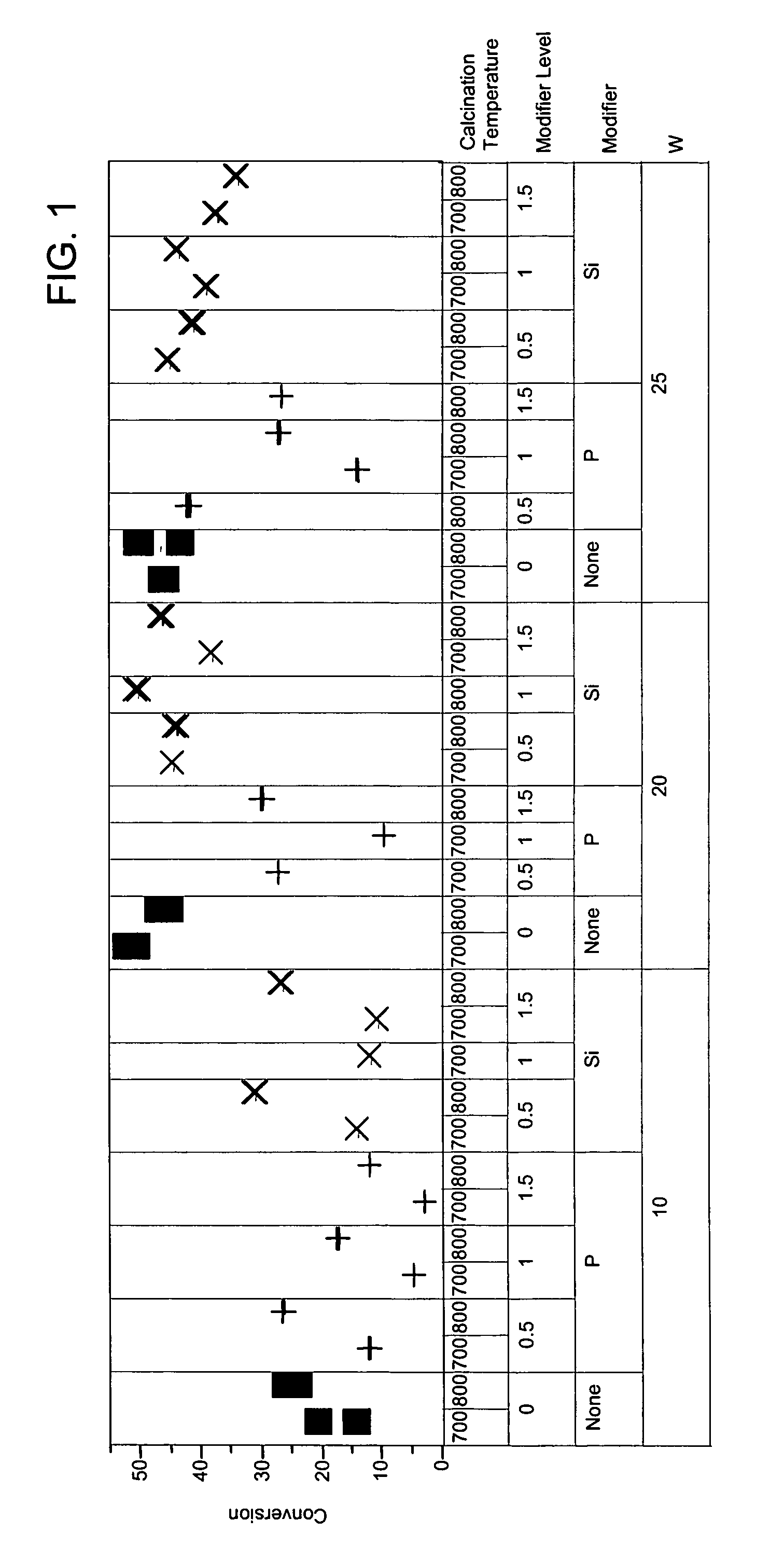Isomerization catalyst and process
a technology of isomerization catalyst and catalyst, which is applied in the direction of physical/chemical process catalyst, metal/metal-oxide/metal-hydroxide catalyst, chemical apparatus and process, etc., can solve the problems of reducing the efficiency of isomerization catalyst, and generating byproducts such as cracked hydrocarbon materials, etc., to improve the efficiency and stability of the catalyst and process, improve the effect of catalyst and process, and the effect of increased
- Summary
- Abstract
- Description
- Claims
- Application Information
AI Technical Summary
Benefits of technology
Problems solved by technology
Method used
Image
Examples
example 1
[0047]Catalyst samples of Tables 1, 2, and 3 were prepared starting with zirconium hydroxide that had been prepared by precipitating zirconyl nitrate with ammonium hydroxide at 65° C. The zirconium hydroxide was dried at 120° C., ground to 40-60 mesh. Multiple discrete portions of the zirconium hydroxide were prepared. Solutions of either ammonium metatungstate or a metal salt (component 1) were prepared and added to the portions of zirconium hydroxide. The materials were agitated briefly and then dried with 80° C. to 100° C. air while rotating. The impregnated samples were then dried in a muffle oven at 150° C. for 2 hours under air. Solutions of a metal salt (component 2, where component 2 is not the same as component 1) were prepared and added to the dried materials. The samples were briefly agitated and dried while rotating. The samples were then calcined at 600° C. to 850° C. for 5 hours. The final impregnation solutions of chloroplatinic acid were prepared and added to the sol...
example 2
[0056]The catalysts of Example 1 were prepared as described above in Example 1. Also, reference catalysts were prepared as described in Example 1 but with the addition of the modifier step being omitted from the preparation. Approximately 95 mg of each sample was loaded into a multi-unit reactor assay. The catalysts were pretreated in air at 450° C. for 6 hours and reduced at 200° C. in H2 for 1 hour. n-Heptane, 8 mol-%, in hydrogen was then passed over the samples at 120° C., 150° C., and 180° C., approximately 1 atm, and 0.3, 0.6, and 1.2 hr−1 WHSV (based on heptane only). The products were analyzed using online gas chromatographs.
[0057]To exemplify the data, selected results are shown in FIGS. 1-4 for experiments at 180° C., 0.6 hr−1 WHSV, and using catalysts comprising 10, 20 and 25 mass-% W, and 0.4 mass-% Pt. The identity of the modifier (or first component), the amount of modifier, the amount of tungsten component, and the calcination temperature are identified along the x-ax...
PUM
| Property | Measurement | Unit |
|---|---|---|
| temperature | aaaaa | aaaaa |
| temperature | aaaaa | aaaaa |
| temperature | aaaaa | aaaaa |
Abstract
Description
Claims
Application Information
 Login to View More
Login to View More - R&D
- Intellectual Property
- Life Sciences
- Materials
- Tech Scout
- Unparalleled Data Quality
- Higher Quality Content
- 60% Fewer Hallucinations
Browse by: Latest US Patents, China's latest patents, Technical Efficacy Thesaurus, Application Domain, Technology Topic, Popular Technical Reports.
© 2025 PatSnap. All rights reserved.Legal|Privacy policy|Modern Slavery Act Transparency Statement|Sitemap|About US| Contact US: help@patsnap.com



